Are you a Quiet Speculation member?
If not, now is a perfect time to join up! Our powerful tools, breaking-news analysis, and exclusive Discord channel will make sure you stay up to date and ahead of the curve.
I'll be honest, this is not the article I was planning on for this week. I had planned to start rolling out my Jace, the Mind Sculptor results but I've run into a problem. Last time, a lot of you asked for more in-depth statistical analysis of the results and I decided to oblige. The problem is that traditional tests yielded unusual results. I had significant data that was outside the margin of error or just flat out errors in my returns. The problem was that my data are a binary series that I'm not used to working with. Most stats questions are multiple choice but this was a yes or no question, and that means a different series of tests that I never learned in school. I could have done part one today, but I don't want to leave a gap between the first and second articles. It's taking time for me to learn the proper test procedures, so instead here is another brewing article.
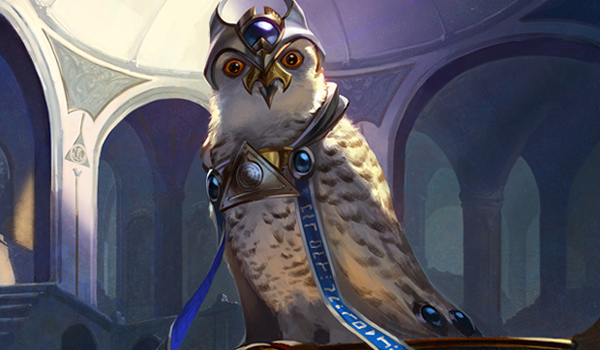
I've been working on making Death and Taxes a thing in Modern for more than a year. I've tried a lot of different brews and versions and while I think the deck is good, it isn't quite good enough. As the cardpool stands right now, I think this style of deck can take you quite far into a tournament on its own merits, but you need to hit the right metagame to actually win the tournament. This is a deck that will consistently win 3.5 games in a MTGO league, but you have to get lucky to actually win the league. The problem is a combination of unpredictability, ineffective mana denial, and a relative lack of power. The tools are all there for the deck to be great, but the Modern metagame is too large for DnT to really tax its opponents. It has to make up the difference with power which isn't quite there.
The Taxman Cometh
I think it important to start off with praise for the deck because there are a lot of positives to Modern Death and Taxes. Yes, I am trying to soften the blow that is coming—why do you ask? Death and Taxes is infinitely customizable, deceptively disruptive, and surprisingly resilient. If you enjoy tuning or metagaming, this is definitely the deck for you. My list is tuned to my current local metagame, but has enough forgiveness built in that I could take it to a more open tournament.
DnT, by David Ernenwein
There is a lot of combo, control, and Tron in my LGS, with Burn and Affinity hanging around the edges. As a result, my deck is a mixture of grindy card advantage and anti-combo cards. It performs well and I've won a lot of packs with the deck. Had I been able to make GP Vancouver I definitely would have played a version of this deck. I would not have played this exact list because it isn't quite where you want to be in an open field, but it would have been very close. The sideboard would have been very different and the maindeck would have had an additional Inspector and Kitchen Finks in place of the Familiars. Interestingly, Jason Simard made Top 8 with a similar list, though he was on an Eldrazi plan. I'd have liked to see his deck in the coverage more, because I found that more than eight colorless lands made for very disappointing mulligans due to lack of white. It obviously worked, but I would have liked to see how.
Tune Your Cards
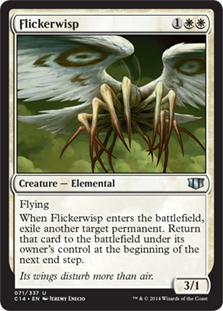 What my development of this deck has shown is that you can tune it to beat anything. Seriously. Modern white has an incredible depth of targeted hate which will crush its target. Death and Taxes and all its derivatives are infinitely adaptable because their core is extremely flexible. Most decks have an immutable core group of cards that define the deck, but for DnT that's really just Flickerwisp and Ghost Quarter. You don't even need a full set of either. This allows you to build and tune to your heart's content around interactive creatures and mana denial. This is the ultimate tuner's deck. Do you want to be White Skies? Add in Vryn Wingmare, Serra Avenger, and Kor Skyfisher. Lots of faster aggro? Wall of Omens and Archangel of Tithes. Combo a problem? Aegis of the Gods, True Believer and Eidolon of Rhetoric. Anything is possible.
What my development of this deck has shown is that you can tune it to beat anything. Seriously. Modern white has an incredible depth of targeted hate which will crush its target. Death and Taxes and all its derivatives are infinitely adaptable because their core is extremely flexible. Most decks have an immutable core group of cards that define the deck, but for DnT that's really just Flickerwisp and Ghost Quarter. You don't even need a full set of either. This allows you to build and tune to your heart's content around interactive creatures and mana denial. This is the ultimate tuner's deck. Do you want to be White Skies? Add in Vryn Wingmare, Serra Avenger, and Kor Skyfisher. Lots of faster aggro? Wall of Omens and Archangel of Tithes. Combo a problem? Aegis of the Gods, True Believer and Eidolon of Rhetoric. Anything is possible.
Those are just the core threats and disruption. The utility creatures and spells can really amplify your gameplan. If you are really dedicated to the archetype, you can absolutely play every week with an entirely new configuration and do well, both because of your opponent's confusion and the inherent power of correctly aligned, specialized disruption. As an example, here are a few utility cards I've run in my mono-white deck:
- Aven Mindcensor: The original library tax, I have run the Aven to really punish Chord decks. The dream is always to make them whiff with tutors or fetchlands, but in my experience they find something often enough that you should content yourself just making it worse rather than non-functional. Leonin Arbiter is generally better both in terms of disruption and your curve, but if you want to run a tutoring package of any kind yourself, you want to swap it for Aven.
- Mutavault: The best creature-land since Mishra's Factory is still excellent against control. I was also running this as an additional way to turn on Eldrazi Displacer. It does exactly what you want, but I'm off it now because without Eldrazi Temple the Displacer package is woeful, and I was having trouble getting enough colored sources to cast my spells.
- Phyrexian Revoker: During a time when Affinity and Ad Nauseam were rampant this card was an all-star. Pithing Needle is more powerful and often unkillable, but shutting down mana abilities is very big game. In general this is too vulnerable to see play, but in a combo-heavy meta it is crushingly potent.
- Samurai of the Pale Curtain: Run as maindeck Dredge hate pre-banning, Samurai is not exactly backbreaking but it is exactly what you want. The problem with Dredge is its recursive creatures will power through yours eventually. Samurai ensures that when they die, they stay dead. It's also randomly good against Life from the Loam.
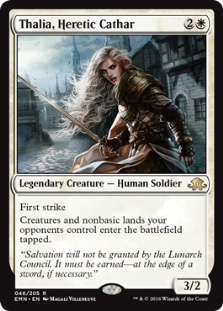 Thalia, Heretic Cathar: While not bad against hasty creatures, it is slow. I ran this card as additional Tron disruption. You often just need an extra turn or two to get there and new Thalia is excellent at the job. She just doesn't do enough elsewhere, and sits in a very crowded spot on the curve, so she was cut.
Thalia, Heretic Cathar: While not bad against hasty creatures, it is slow. I ran this card as additional Tron disruption. You often just need an extra turn or two to get there and new Thalia is excellent at the job. She just doesn't do enough elsewhere, and sits in a very crowded spot on the curve, so she was cut.- Warping Wail: Often a sideboard card, when control was very heavy it was moved to the mainboard. The sheer versatility of this spell is shocking and you can make excellent use of every mode. My favorite is countering sweepers and Ancestral Vision. However, it isn't quite powerful enough to see consistent play, especially around instant-based combo decks.
- Weathered Wayfarer: A few months ago I mentioned this card, and it is actually very good in the right circumstances. During particularly Tron-heavy weeks this card was an absolute beating, enabling me to completely cripple their mana for the entire game. The main problem with the card, and why it is currently cut, is that it was easy to cripple your own development as well. Searching every turn costs mana and using your land as a spell stunts your mana development too. Games with Wayfarer and no Vial are surprisingly hard to win. Still, when things go your way this card very nearly wins the game on its own against big-mana decks. It was also a nonbo with Leonin Arbiter, so it is best to cut him for Aven Mindcensor. I also confess to going way too deep with this card—Mouth of Ronom deep. It was not pretty.
This is just a small sample of cards I've tried. Like I said, the cards are there for you to find the configuration that works for the metagame you expect.
Tune Your Deck
All of that is just what you can do with mono-white. Once you start adding in colors the customization never stops, and matchups change dramatically. I consider mono-white DnT to be the "average" deck in the family. Its good matchups are rarely better than 60% and its bad ones are around 45%. I consider Affinity, Burn, and the many iterations of Tron and Valakut to be good matchups, Fair decks like BGx and combo decks to be even, and creature decks like Merfolk to be bad matchups. I'll be using this as a baseline to talk about the variations.
- GW Hatebears: The most common version, GW adds some acceleration from Ignoble Hierarch to much harder-to-answer threats like Loxodon Smiter and Voice of Resurgence. As a result this deck is far more powerful against the fair decks than the other versions, with Renegade Rallier supercharging the grind plan. Versions with Kitchen Finks and Gavony Township are also significantly better against creature decks. However, GW usually runs less mana disruption than mono-white and so is worse against big-mana and combo decks.
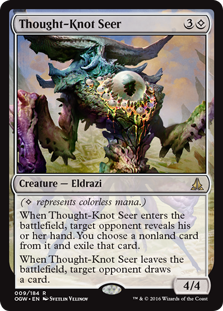 BW Hatebears/Eldrazi and Taxes: These days the main distinction is whether they run the Eldrazi or not, the manabase is almost the same and they run most of the same cards. These decks have more hand disruption like Tidehollow Sculler, Thought-Knot Seer, and Sin Collector, which really boosts them over control and combo decks. Eldrazi is also better against creatures thanks to Wasteland Strangler. However, their painful mana makes them more vulnerable to Burn and Affinity. They also feel more clunky than other versions because the decks have more reliance on internal synergies, like Sculler and Strangler, than other versions. When things come together the deck will crush your soul. When it doesn't the decks clunks like an unbalanced washing machine. They are also very vulnerable to Blood Moon.
BW Hatebears/Eldrazi and Taxes: These days the main distinction is whether they run the Eldrazi or not, the manabase is almost the same and they run most of the same cards. These decks have more hand disruption like Tidehollow Sculler, Thought-Knot Seer, and Sin Collector, which really boosts them over control and combo decks. Eldrazi is also better against creatures thanks to Wasteland Strangler. However, their painful mana makes them more vulnerable to Burn and Affinity. They also feel more clunky than other versions because the decks have more reliance on internal synergies, like Sculler and Strangler, than other versions. When things come together the deck will crush your soul. When it doesn't the decks clunks like an unbalanced washing machine. They are also very vulnerable to Blood Moon.- UW Spirits and Taxes: Using the best creatures from both Spirit decks and DnT, this deck plays additional disruptive creatures and counterspells, making it a nightmare for Tron, combo, and control. DnT can lose to Tron when they draw well, but UW needs to fall apart to lose. Seriously, it is a fantastic matchup. The problem is that your creatures are far less impressive than in DnT, so your creature and GBx matchups are much worse. Even Reflector Mage only does so much.
- Boros Taxes: I have been told this deck built, around Blood Moon and Magus of the Moon, exists, though I've never actually seen it in person. This deck is phenomenal against decks where Blood Moon is good and really subpar against everything else.
The Diversity Problem
Of course, the ability to customize your deck comes at a price. The individual taxes and lock pieces aren't that powerful on their own, and if you miss your target you'll be very behind. Modern is not Legacy and this means that DnT will need to sit in the lower tiers for the time being. Eldrazi and Taxes has done better than other versions thanks to the power of the Eldrazi, but it still sits in the middle of Tier 2. The problem is that Modern is in many ways more healthy than Legacy in terms of diversity and when you couple that with weaker disruption there is a problem.
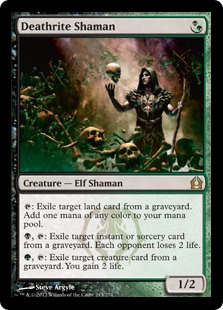 When you walk into a Legacy tournament you know that no less than half the room will be playing Brainstorm and/or Deathrite Shaman. These cards create predictable restrictions on deckbuilding. As a result, Legacy DnT can be built with these two cards in mind. The narrowed focus allows you to play more targeted disruption and more effectively function as a Prison/Aggro deck. Add to that the greater power of Wasteland and Rishadan Port and you have a top-tier deck.
When you walk into a Legacy tournament you know that no less than half the room will be playing Brainstorm and/or Deathrite Shaman. These cards create predictable restrictions on deckbuilding. As a result, Legacy DnT can be built with these two cards in mind. The narrowed focus allows you to play more targeted disruption and more effectively function as a Prison/Aggro deck. Add to that the greater power of Wasteland and Rishadan Port and you have a top-tier deck.
That really isn't possible in Modern. The only constant among decks are fetchlands, and there is only so much you can do to target those. Thalia is just less powerful when everyone isn't relying on one-mana cantrips. As a result Modern decks have far greater diversity in their composition than Legacy's. This makes it easier to insulate yourself from hate splash damage. To make up for this weaker disruption, you need to be more powerful. This either means better threats or a faster clock, but that isn't really possible for Modern white. We have good, cheap creatures and good Angels, but they're weak in the Modern context. This can leave the deck underpowered and struggling when you miss your metagame projection.
What It Needs
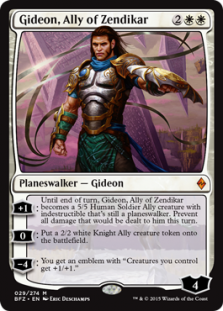 To really move up the tiers, DnT either needs the format to be more restrictive, so it can target decks more easily, or it needs better win conditions. The former is undesirable and unlikely to occur, so that leaves us hoping for a new creature. Gideon, Ally of Zendikar has sometimes been that threat, but he's poor in enough matchups that I'd keep him in the sideboard. My experience suggests that we need a more resilient disruptive three-drop that flies. Mindcensor and Wingmare's stats are too low, but another three-power flier like Flickerwisp would likely do the trick. There are some three-drop 3/xs already, but they don't really do anything other than beat. We need something disruptive. Alternatively, seeing protection return could also work.
To really move up the tiers, DnT either needs the format to be more restrictive, so it can target decks more easily, or it needs better win conditions. The former is undesirable and unlikely to occur, so that leaves us hoping for a new creature. Gideon, Ally of Zendikar has sometimes been that threat, but he's poor in enough matchups that I'd keep him in the sideboard. My experience suggests that we need a more resilient disruptive three-drop that flies. Mindcensor and Wingmare's stats are too low, but another three-power flier like Flickerwisp would likely do the trick. There are some three-drop 3/xs already, but they don't really do anything other than beat. We need something disruptive. Alternatively, seeing protection return could also work.
There is belief that Stoneforge Mystic is what the deck really wants, and I can see why people think that. It is a cornerstone of the Legacy version and it is cheap and powerful. I'm not convinced that it is an acceptable Modern card, and I also don't think that current DnT wants it. It competes in the same slot as Arbiter and the two don't play well together. Lacking access to Wasteland, a lot of the appeal of DnT lies in Arbiter. Stoneforge may well be fine in the deck, but I don't think it automatically makes the deck better. You have to readjust and rebuild around the card.
It Is Inevitable
So there you have it, my definitive take on Death and Taxes. It is a good deck, I like it, and if you enjoy customizing and tuning your deck so will you. You just have to understand that while you will often go deep with the deck, you may not be able to close the event. Time and new cards will tell.
Hopefully I will have the preliminary analysis done and off for confirmation and review next week, so that I can start sharing my Jace results. Regardless of what you think about the card, you will be surprised by my results.




Good read, and I’m really looking forward to that Jace article!
I would like to say that you’ve made a mistake in your conclusion in the SFM testing article. You produced evidence that supported your hypothesis, but then convinced yourself that factors outside the experiment would render it invalid.
This is a mistake for two reasons. Firstly, assuming SFM is just better than BGx when you failed to test the Jund matchup is a mistake because the best answer for SFM is commonly played (kolaghan’s command) in that shell. Moreover, you didn’t test grixis either, another test you could have based that assessment on. So you missed testing the confounding factor you used (in part) to disregard your results. This is obviously mistaken, although one that is easier to identify after the conclusion.
Secondly, you are underestimating the pressure on deck to stay low as it is. The existence of tron has put way more pressure on decks to stay lean, fast and low to the ground than SFM ever could. The only thing SFM does is give a threat that is consistent against aggro, while being flash which lets you hold interaction against combo/ramp.
This article even illustrates why SFM is needed for white. There is no other threat that permits the gameplay needed in that colour: be proactive on the board against aggro, and be flexible against combo/ramp via flash.
SFM is exactly what we need to help Uxx improve their matchups across the board by a small margine, while also helping DnT in the same way.
Was curious as to whether you’ve tested the Spirit of the Labyrinth/Geier Reach Sanitarium lock. Simard (Vancouver Top 8 guy) mentioned it as something he’d test if he went back to an Aether Vial build, and I’m curious to see if it can be made competitive.
Speaking of which, you say his list is similar to yours, but his going with zero Vials and only 2 Wisps is a pretty big deal. Any thoughts or play test notes on going Vial-less?
I’ve tried it and it was very cute. It was in fact a hard lock when your opponent was hellbent, but otherwise it was mildly annoying and often my Spirit just died. The problem was that it only came together when you were already winning and neither Sanitarium or Spirit are that good on their own. There aren’t enough cards that say Draw a Card getting played in Modern for me to play Spirit as anything but a sideboard card against control. I think if you want a land that draws you cards Sea Gate Wreckage or Horizon Canopy will be better more of the time.
Simard’s list is really interesting. He has essentially hybridized DnT with Eldrazi and taxes. I believe that was only running two Wisps because that was where he cut for Displacer. That is a perfectly fine thing to do, but if I was going that route I would have played another Displacer and cut the Mindcensor because it looks like his deck is really intended to maximize that kind of value play. I can’t imagine not running Vials except as a problem of space. He really needed the extra land and then he’s running Shining Shoal. In that context he can’t afford the space for artifacts.
I think the Windbrisk Heights are a little greedy but apparently it worked for him.
Maybe it is because few were “on it” before Eldrazi happened, but WB D&T without Eldrazi got overlooked even though it ran very smooth, thanks to a curve that worked well with Dark Confidants. I could try to find the specific list if anyone’s interested, but looking up pre-Eldrazi/Splinter Twin ban lists would probably be just as good. The black splash used to be for 1cc discard, rather than relying comparatively slow creatures for hand disruption.
The really overlooked advantage of 1cc discard is the information that it gives so early in the game; telling me how to sequence plays, whether to go for the LD plan, if I’ll have to race, etc, etc. Without Eye of Ugin, WB Eldrazi & Taxes has treated me horribly .
I remember trying those lists. They were very good and better than the mono-white versions of the day, the problem was that when you didn’t have Dark Confidant all the discard left you resource light and you frequently lost to more impressive top decks. As a result I recall them being terrible against creature decks. I see the current plan using the Eldrazi to be an effort to make up for this weakness. I’m not certain that they are better than mono-white anymore thanks to Thraben Inspector, but it is worth investigating.
“I’m not certain that they are better than mono-white anymore thanks to Thraben Inspector, but it is worth investigating.”
I see what you did there!
🙂